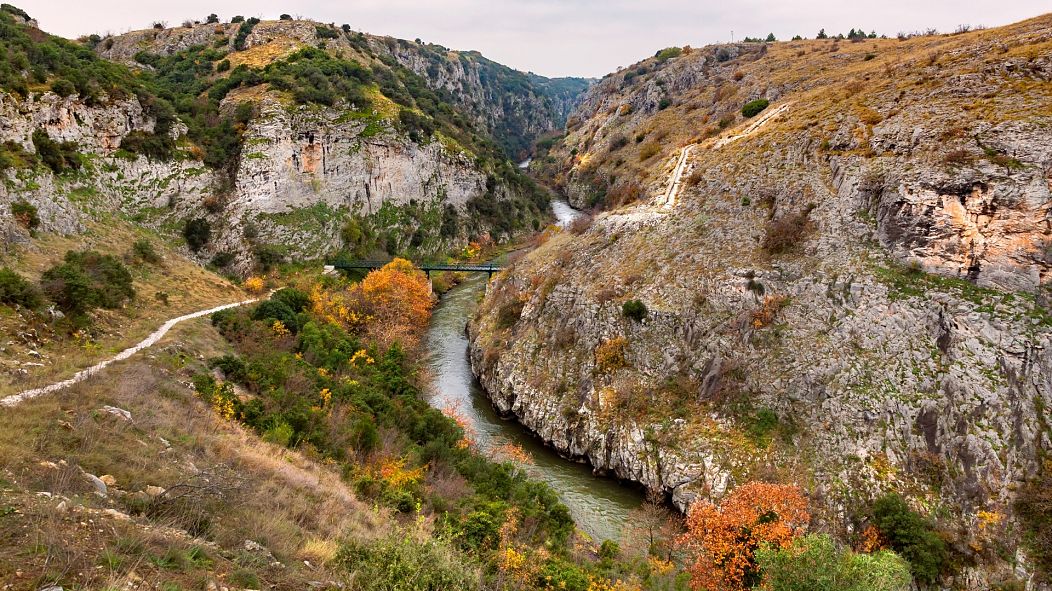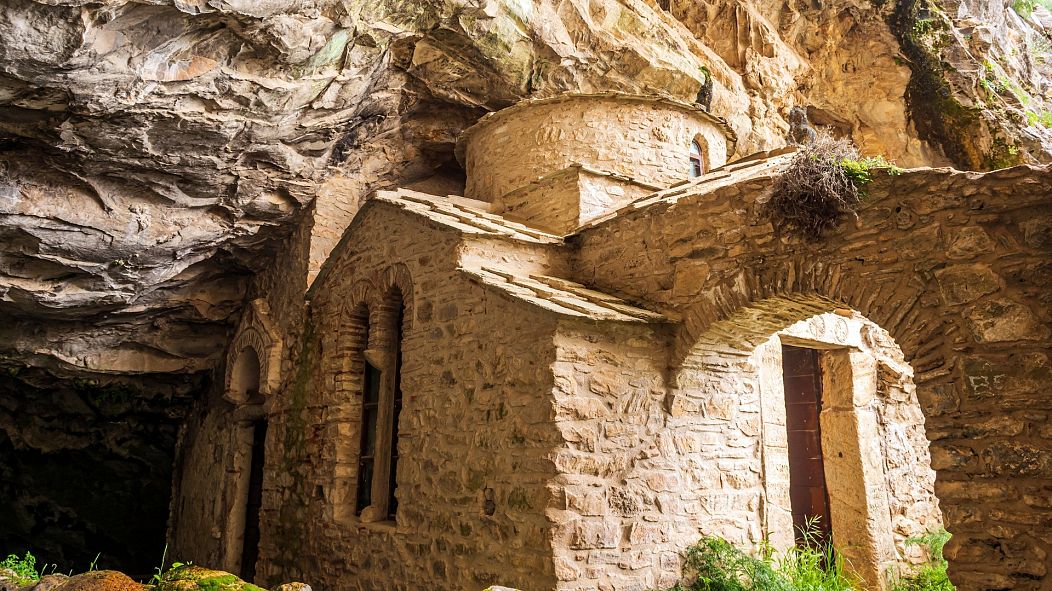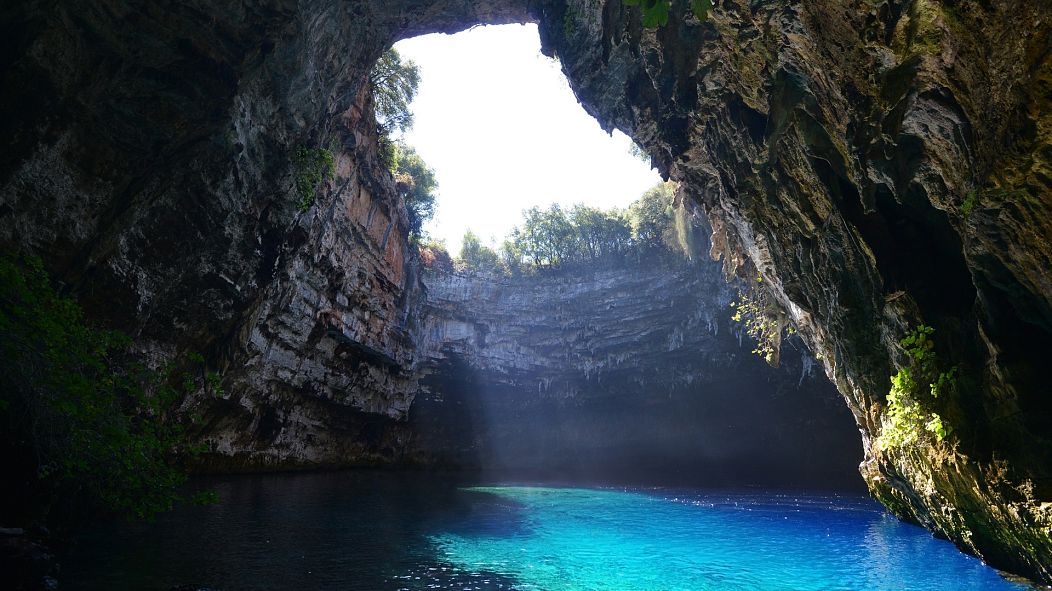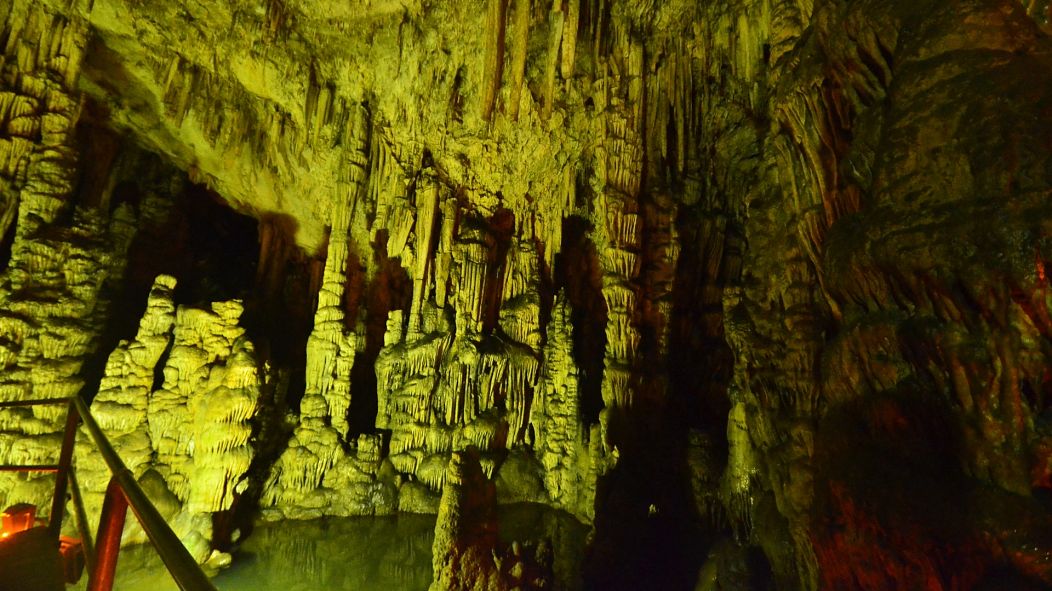EuroNews recently did a nice piece on grottos in Greece, many of which have mythological roots, so I thought I'd share those with you today.
The Cave of Alistrati at Serres
Let's take it from the top, of Greece, that is. That's where you'll find the Cave of Alistrati, near the town of Serres in the Macedonia region.
One of the largest caves in Europe, it has stalactites and stalagmites in different colours soaring to heights of 18 metres as well as rare formations called heccendrites, helictites and cave pearls, all adding up to an experience best described as otherworldly.
Greek myth holds that the Sphinx made an appearance nearby and also that Hades absconded with Persephone here to bring her to the Underworld.
Cave of Penteli
Also called Davelis Cave, the Cave of Penteli is located just north of Athens on the slopes of Mount Pentelicus. According to lore it was discovered by the builders of the Parthenon, who extracted marble for the temple from mountainside quarries here.
The small church at the entrance dates back to the Middle Ages, but in antiquity followers of Pan gathered to worship at the mouth of the cave.
Cave of Euripedes, Salamina
You know that thing where writers have to "go into their cave" to concentrate and write? Well that figure of speech may have started on the Greek island of Salamina, close to Athens, in the Cave of Euripedes.
The narrow hillside cave is where ancient Greek playwright Euripedes retreated to pen his famous tragedies. The cave is about 47 metres deep with ten modestly sized chambers, in one of which a late fifth-century BC black-glaze skyphos, or two-handled wine cup was found. The cup bore letters that spelled out the name Euripedes.
The cave is located near the settlement of Aianteio - to find it follow the footpath that extends 350 meters north of the end of Euripedes Street.
Melissani Cave, Kefalonia
Of the numerous caves in Greece, few will light up your Instagram feed like Melissani Cave on the eastern side of the island of Kefalonia in the Ionian Sea, outside Sami.
Surrounded by forest, it was a Cave of the Nymphs in Greek mythology, but what makes it truly epic is the lake inside. Thanks to the roof of one of the cave's chambers having literally caved in centuries ago, it is open to the sky.
When the sunlight hits the still crystalline water around noon the sunken lake shimmers with a spectacular blue light.
Caves of Zeus, Crete
According to Greek mythology Zeus was born in a cave on Crete, the biggest of the Greek islands.
Some sources put the exact spot of the thunderbolt-hurling deity down to the Psychro Cave, also called the Diktaean Cave. This one is located above the village of Psychro in the Lasithi plateau region of eastern Crete (as a sacred "peak sanctuary" it was also venerated by the Minoans).
But other accounts of Zeus' origins identify his birthplace as the Idaean Cave, found on the slopes of Mount Ida, which at 2,456 meters is the tallest mountain on Crete.






No comments:
Post a Comment